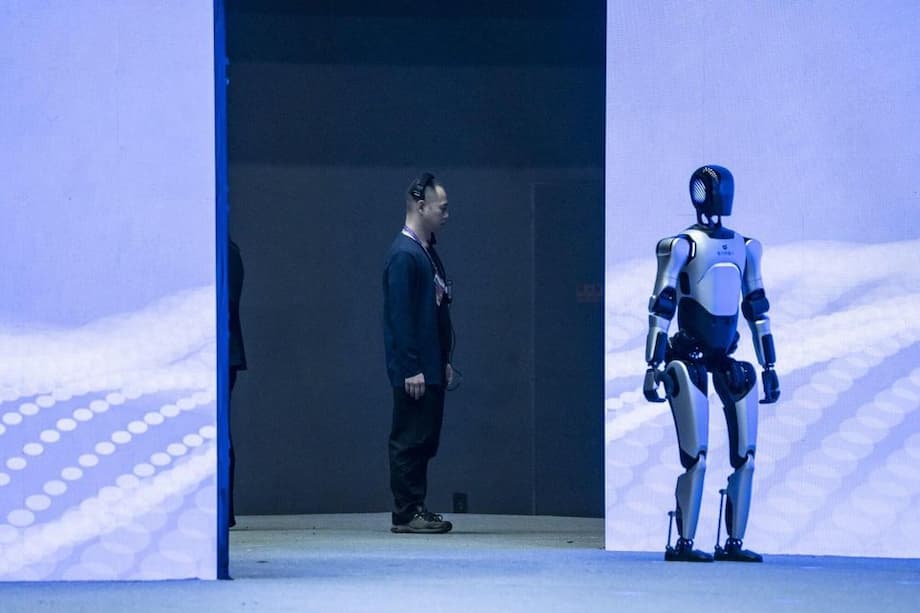China’s Humanoid Robots: A Showcase of Ambition at the Shanghai World AI Conference 2025
At the 2025 World AI Conference (WAIC) in Shanghai, China’s humanoid robots took the spotlight, dazzling visitors with their ability to serve craft beer, play mahjong, stack shelves, and even box. These displays were more than just entertainment—they were a bold demonstration of China’s rapidly advancing artificial intelligence (AI) capabilities and its ambition to lead the world in robotics innovation. The event, which drew over 800 companies and showcased more than 3,000 products, underscored a pivotal moment for China’s AI sector as it seeks to rival, and perhaps surpass, the United States in both technological prowess and regulatory leadership.
- China’s Humanoid Robots: A Showcase of Ambition at the Shanghai World AI Conference 2025
- Why Humanoid Robots? China’s Strategic Vision
- From Factory Floors to Expo Stages: The Rise of Chinese Robotics Companies
- China’s Global Push: From Shanghai to Osaka and Beyond
- Industry Impact: Market Size, Commercialization, and the Future of Work
- China’s Innovation Ecosystem: The Greater Bay Area and Beyond
- Challenges and the Road Ahead
- In Summary
Premier Li Qiang opened the conference by announcing the creation of a new organization dedicated to AI governance, emphasizing the need to balance the benefits of AI development with its potential risks. Yet, inside the bustling expo halls, the mood was one of excitement and optimism. As Mr. Yang Yifan, R&D director at Shanghai-based AI platform provider Transwarp, put it,
“Demand is currently very strong, whether in terms of data, scenarios, model training, or artificial construction. The overall atmosphere in all these areas is very lively.”
Why Humanoid Robots? China’s Strategic Vision
China’s focus on humanoid robots is not accidental. The Ministry of Industry and Information Technology (MIIT) has identified humanoids as a disruptive technology on par with computers and smartphones. According to official guidelines, China aims to achieve mass production of humanoid robots by 2025, establishing an innovation system, making breakthroughs in key technologies, and ensuring a reliable supply of core components. By 2027, humanoids are expected to become a significant driver of economic growth.
This ambition is backed by massive government support, including $1.4 billion robotics funds in both Beijing and Shanghai, and a national strategy that mirrors China’s earlier push in electric vehicles. The goal is to reach a density of 500 robots per 10,000 workers by 2025, with applications spanning manufacturing, healthcare, logistics, agriculture, and hazardous environments. China also seeks to set international standards for humanoid robots, positioning itself as a global leader in both technology and regulation.
At the WAIC and other expos, the increasing sophistication of Chinese robots was evident. While some machines still moved with a hint of awkwardness, their year-on-year progress was clear. Hangzhou-based Unitree’s G1 android, for example, demonstrated impressive agility as it kicked, pivoted, and shadowboxed around a ring, maintaining its balance with remarkable fluidity. Ahead of the conference, Unitree announced the launch of its full-size humanoid R1 for under US$6,000—a dramatic reduction in price that could accelerate widespread adoption.
From Factory Floors to Expo Stages: The Rise of Chinese Robotics Companies
China’s robotics sector is not just catching up to Western competitors—it is, in some areas, leading the way. Companies like UBTECH, Unitree, Deep Robotics, and Noetix are pushing the boundaries of what robots can do, both in industrial and consumer settings.
UBTECH: From Cosplay to Car Factories
At the BEYOND Expo 2025 in Macau, UBTECH unveiled its latest full-sized commercial robot, Walker C, and a panda-themed robot, Youyou. In a playful twist, these robots performed a reverse cosplay, impersonating expo co-founders on stage. But UBTECH’s ambitions go far beyond entertainment. The company is collaborating with major automakers like Zeekr, BYD, Audi, Volkswagen, and Foxconn to integrate humanoid robots into production lines. Its Walker S series has already completed initial training in auto factories, and UBTECH aims to deploy 1,000 robots this year, scaling up tenfold next year.
Walker C, showcased as a tour guide at the China Pavilion during the Osaka Expo 2025, features a biomimetic torso, advanced motion control, and multilingual interaction capabilities. Alpha Mini, a portable humanoid robot, can display emotions, recognize faces, and perform dynamic actions like dancing and yoga. These robots are not just technological marvels—they are designed for real-world applications in business, education, and entertainment.
Unitree: Affordable Humanoids for All
Unitree Robotics has made headlines by marketing one of the world’s first humanoid robots for under US$6,000. The R1 bot, weighing 25kg and equipped with 26 joints, boasts multimodal AI, including voice and image recognition. This breakthrough in affordability is seen as a milestone for the industry, potentially making humanoid robots accessible to small businesses and even households. Unitree’s older G1 robot was priced at US$16,000, while the advanced H1 model costs over US$90,000. The company’s rapid iteration and cost reduction strategies are reminiscent of China’s approach to electric vehicles, where scale and supply chain efficiency drove global competitiveness.
Deep Robotics, Noetix, and the Next Generation
Other Chinese firms are also making waves. Deep Robotics’ quadruped robots, such as the B2 and Go2, are used for building inspections and mimic dog behavior, while Noetix has developed a hyper-realistic robot head that mirrors human facial expressions in real time. These innovations hint at future roles for robots as interactive information kiosks, companions, and even tutors.
EngineAI’s PM01 humanoid can reportedly perform acrobatics and guide visitors using depth cameras, while Robogo Robot’s Aria, powered by SenseTime AI, demonstrated growing emotional intelligence. These advancements are opening new career paths in programming, ethics, and human-robot interaction, while also raising questions about the future of work.
China’s Global Push: From Shanghai to Osaka and Beyond
China’s humanoid robots are not confined to domestic expos. At the Osaka World Expo 2025, Chinese firm UBTECH’s AI-powered humanoid entertained crowds at the China Pavilion, speed-walking, scanning barcodes, and performing receptionist duties. The pavilion blended traditional Chinese culture with cutting-edge technology, featuring bamboo panels, poetry, and augmented reality experiences. Interactive displays powered by iFlytek, a company specializing in voice recognition and translation, brought mythological figures like the Monkey King to life, engaging visitors in multiple languages.
Despite ongoing geopolitical tensions, including U.S. sanctions and export controls on microchips, Chinese tech companies are expanding rapidly in non-Western markets. The China Pavilion at Osaka drew thousands of visitors daily, presenting a modern, innovative image of Chinese technology to a global audience.
Industry Impact: Market Size, Commercialization, and the Future of Work
China is expected to account for more than half of global humanoid robot production in 2025, with forecasts suggesting over 10,000 units produced and sales revenue exceeding $1.14 billion. The market for embodied intelligence—where robots integrate AI with physical interaction—is projected to reach 5.3 billion yuan this year and rise to 103.8 billion yuan by 2030, capturing nearly 45 percent of the global market.
This rapid growth is driven by a combination of technological advances, market demand, and supportive policies. The transition from pilot projects to large-scale commercialization mirrors China’s experience in electric vehicles, where government support, intense price competition, and a robust supply chain fueled global dominance. According to Goldman Sachs, the global humanoid robot market could reach $38 billion by 2035, with material costs per robot dropping rapidly as mass production scales up.
Chinese companies believe they can reduce costs even further, thanks to fast iteration and domestic sourcing of components. For example, Shanghai Kepler Exploration Robotics is developing its fifth worker robot version, aiming for a sales price below $30,000. UBTECH sources over 90% of its components from China, reducing reliance on foreign suppliers.
Will Robots Replace Human Workers?
The rise of humanoid robots inevitably raises concerns about job displacement. At the WAIC, Baidu showcased its “digital humans”—AI agents modeled on real people, capable of thinking, making decisions, and collaborating. In a recent e-commerce broadcast, Baidu’s digital humans outperformed their human counterparts in sales, and over 10,000 businesses are already using the technology.
However, industry leaders emphasize that AI and robots are tools designed to improve quality and save time, not eliminate human input. As Wu Chenxia, head of Baidu’s digital human department, explained,
“AI is a tool that should be used to improve quality and save time and effort, which still requires human input.”
While some jobs may be replaced, new roles will emerge that leverage creativity, emotional intelligence, and problem-solving—skills that robots are still far from mastering.
China’s Innovation Ecosystem: The Greater Bay Area and Beyond
The rapid advancement of China’s robotics industry is supported by a vibrant innovation ecosystem, particularly in the Greater Bay Area (GBA), which includes cities like Shenzhen, Hong Kong, and Macau. The BEYOND Expo GBA Innovation Tour 2025 brought together industry leaders, investors, and entrepreneurs to explore advancements in AI, robotics, autonomous driving, and new energy. Participants visited leading tech companies, incubators, and research centers, gaining insights into the region’s role as a global innovation hub.
Shenzhen’s XbotPark, for example, has launched over 80 startups, including several unicorns, while companies like Intellifusion Technologies and DeepRoute.ai are pioneering visual AI and autonomous driving solutions. UBTECH, headquartered in Shenzhen, has developed a full stack of humanoid robotic technologies, offering solutions for industries ranging from education to logistics and wellness.
Challenges and the Road Ahead
Despite the optimism, challenges remain. Experts caution against overhyped investments and short-term capital inflows, urging policymakers to focus on research, development, and real-world testing. Setting standards and managing risks will be crucial to ensuring a sustainable and competitive market.
There are also geopolitical hurdles. U.S. sanctions and export controls on advanced microchips have affected some Chinese companies, particularly those involved in sensitive technologies. However, China’s strategy of building a self-reliant supply chain and expanding into non-Western markets has helped mitigate some of these risks.
Finally, the question of public acceptance looms large. While expo visitors were thrilled by back-flipping dog robots and dancing humanoids, the broader societal implications—privacy, security, ethics, and employment—will require careful consideration as robots become more integrated into daily life.
In Summary
- China’s humanoid robots took center stage at the 2025 World AI Conference in Shanghai, showcasing the country’s rapid progress in AI and robotics.
- The government aims to mass-produce humanoid robots by 2025, positioning China as a global leader in technology and regulation.
- Companies like UBTECH and Unitree are driving innovation, with affordable, agile robots designed for factories, homes, and public spaces.
- China is expected to produce over half of the world’s humanoid robots in 2025, with the market for embodied intelligence set to grow rapidly.
- While robots raise concerns about job displacement, industry leaders emphasize their role as tools to enhance human productivity.
- China’s innovation ecosystem, particularly in the Greater Bay Area, supports the rapid development and commercialization of robotics technologies.
- Challenges remain, including the need for standards, risk management, and navigating geopolitical tensions, but China’s momentum in AI and robotics shows no signs of slowing.




